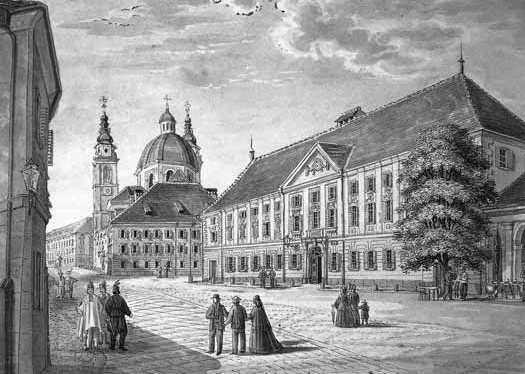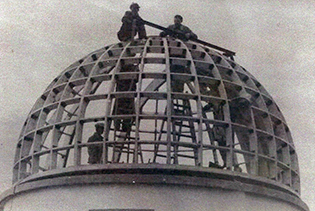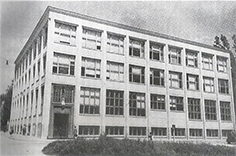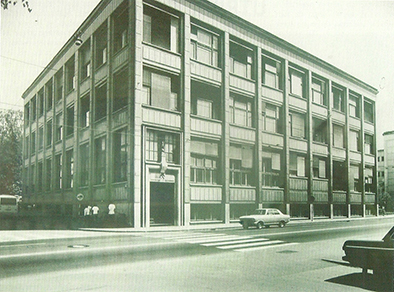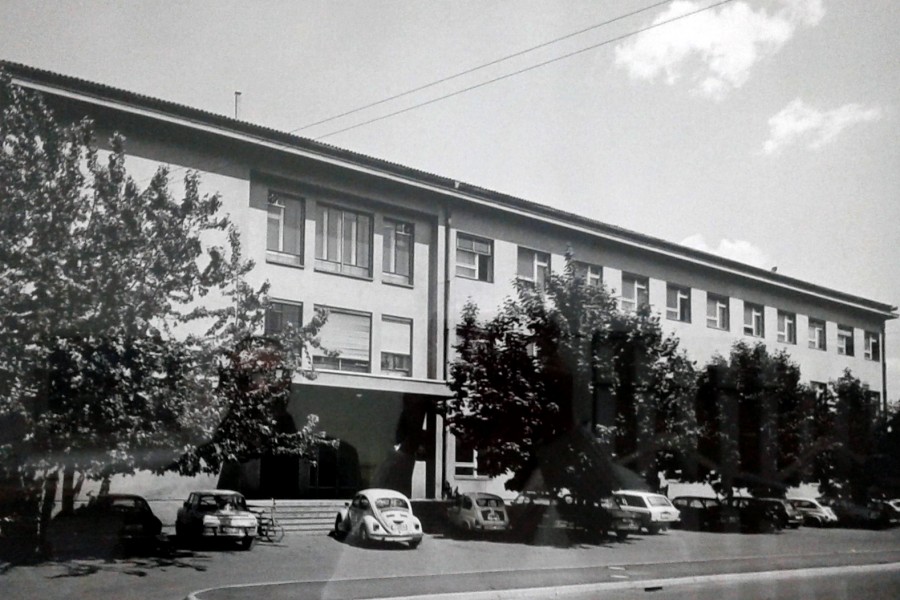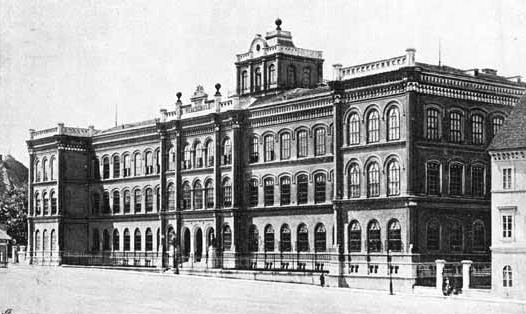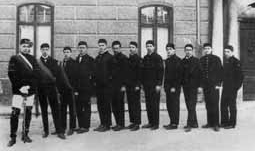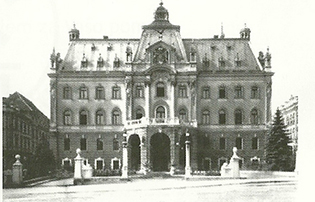History of the Faculty of Technical Sciences, University of Ljubljana
In Slovenia, the first traces of post-secondary studies of natural science and technology may be found in the study process of the Jesuits in the 17th and particularly the 18th century. Like elsewhere, as a teaching order, the Jesuits in Ljubljana, Klagenfurt and partly in Maribor raised the entire educational programme of lower and higher studies (studia inferiora, studia superiora) to an entirely new level with their study rules, the Ratio studiorum. The crucial watershed in the treatment of natural science subjects in the Ljubljana Jesuit schools was the purchase of instruments for experimental physics lessons in 1754 at the time of Professor Bernard Ferdinand Eberg (1718 – 1773), who, by order of Empress Maria Theresa, introduced experimental lessons in mathematical and physics subjects in Ljubljana.
By pressing for a tertiary education model, which had already been outlined based on the Bavarian model at the time of Joseph II (1780-1790), much better opportunities to receive academic education were created in Austria at the end of the 18th and the beginning of the 19th century. Due to the double level of this branch of education – lyceum and “erudite” (university) studies – the small philosophy & theology lyceum schools in the provinces, which were regarded with distrust by the enlightened reformers in the second half of the 18th century, took on an entirely new significance, especially in the non-German parts of the monarchy. The Imperial Royal Lyceum of Ljubljana (Archiducale Lyceum Labacense, Caesareo Regii Lyceum Labacense, K.K. Lyzäum zu Laibach, K.K. Lyzeum zu Laibach), which was formally established in 1791, was among the Austrian lyceums without the right to award academic titles that, as semi-university institutions, served as a kind of connecting link between gymnasiums and proper universities. It comprised three branches of study – philosophy, medicine & surgery and theology – and also offered a number of optional courses ranging from agriculture, history, pedagogy, botany and philosophy to modern languages. What undoubtedly set the philosophical studies at the Ljubljana lyceum apart as special was its mechanical (craft & industry) school.
French rule over the east coast of the Adriatic Sea in Napoleon’s time in the early 19th century (1809-1814) was also an extremely important though short-lived period in the history of the education system. Besides the reorganisation of primary and secondary education, the most important bonus of the French school reform was the establishment of a university in Ljubljana. With the 1810/11 academic year, the so-called “central schools” (ecoles centrales) were launched in Ljubljana with six study courses: for medical doctors, surgeons, engineers, architects, lawyers and theologians. At the beginning of the first year, the central schools had a total of 300 students and half that number at the end of the year. The Austrians, on their return in 1814, restored the education system to its previous state. We should also note for this period that professional education was conducted in the framework of the senior years of primary schools and was best developed in Idrija. In 1811-1812, the mathematical department of the Idrija school had two classes with five teachers for arithmetic with logarithms, algebra and equations, geometry with trigonometry, drawing (machine drawing and cave map drawing), architecture and a remedial French language course.
From the middle of the 19th century onwards, in keeping with the new structure of Austrian secondary education, Slovenia embraced the “realka”, a new type of secondary school that, unlike the classical gymnasium, emphasised instruction in tangibles – i.e. natural science courses. The first lower realka school was established in Ljubljana in 1851/52 and was followed by realkas in Gorizia (1860), Trieste and Maribor (1870) and Idrija (1901). The realka in Ljubljana evolved into a higher realka in the 1860s and was decidedly pro-German in character; both its teachers and students were Germans living in Carniola, but they also educated Slovenians, including the writer Ivan Cankar, Rihard Jakopič, Maks Fabiani, Srečko Kosovel and many others.
With the slow economic development of the Slovenian provinces in the Austro-Hungarian Monarchy, there was no perceptible demand for the education of local technical experts. The modest industry was controlled by foreign, largely German capital that mostly employed Germans, while public services were mostly provided by Czech experts. In the decade-long struggles of the Slovenians for their own university before World War I, technical studies were never mentioned. However, in the new confederation with Serbs and Croats, the previously backward Slovenian nation found itself ahead of others in technology, which prompted the idea of university-level technical studies in Ljubljana, organised within a university or an independent college.
In the summer months of 1919, when lectures were in progress at the technical university course, the university idea matured owing to the efforts of the University Commission and support from the Slovenian MPs. On 23 July 1919, the Regent Alexander signed an act on establishing the University of Ljubljana with five faculties: arts, law, theology, medicine and technical sciences.
In the first academic year, the Faculty of Technical Sciences had a total of four full professors, one associate professor, one assistant professor and 14 part-time teachers. In the second academic year, a third study year opened up at the civil engineering, architecture and mining departments and a second study year at the chemistry department. In the 1921/22 academic year, a staff of 11 full professors, 3 associate professors, 2 assistant professors and 29 part-time teachers conducted four-year studies at the architecture, mining and chemistry departments, while only three years were available at the civil and electrical engineering departments. A complete eight-semester course in all five departments of the Faculty of Technical Sciences became available with the 1923/24 academic year.
In the first few years, the study courses were organised in groups of related courses: mathematical courses, natural science courses, mechanical and electrical engineering, civil engineering and architecture, and the group “other” included first aid, hygiene and bookkeeping. When the structure of the Faculty of Technical Sciences was reorganised in the spring of 1926, the previously scattered chairs or related study courses were brought together under eleven institutes: the Institute of Applied Mechanics, the Institute of Physics, the Institute of Mineralogy, Geology and Mineral Deposits Science, the Institute of Chemistry, the Institute of Cave and Land Surveying, the Institute of Technical Mechanics, the Institute of Electrical Engineering, the Institute of General Mechanical Engineering, the Institute of Civil Engineering, the Institute of Architecture and the Institute of Mining, all headed
